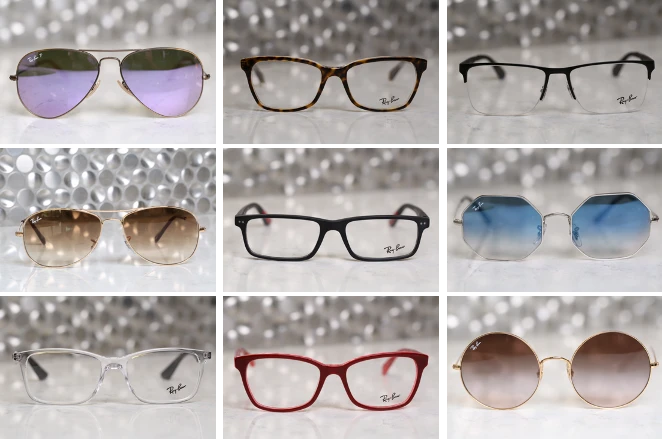How to clean your eyeglasses
Cleaning youreyeglassesdaily is the best way to keep them looking great and prevent lens scratches and other eyewear damage. But there's a right...
3 min read
 The Rochester Eye & Laser Team
:
Apr 8, 2024 3:59:04 PM
The Rochester Eye & Laser Team
:
Apr 8, 2024 3:59:04 PM

After witnessing the eclipse, it's crucial to understand the impact of the sun on your eyes. If you used eclipse-specific eyewear to observe the event, that's great! Make sure to safeguard your eyes from harmful UV rays by being aware of the dangers of sun exposure.
Exposure to the sun's ultraviolet (UV) rays can have a detrimental effect on your eye health. UV rays are a form of radiation that can damage the cells in your eyes, leading to various eye conditions and vision problems.
UV rays can cause sunburn on the surface of your eyes, known as photokeratitis. This condition can cause redness, pain, and a gritty or burning sensation. Prolonged exposure to UV rays can also increase your risk of developing cataracts, which cloud the lens of your eye and can lead to vision loss.
Additionally, UV rays can contribute to the development of age-related macular degeneration (AMD), a leading cause of vision loss in older adults. AMD affects the macula, the part of the eye responsible for central vision, and can result in blurred or distorted vision.
It's important to understand the impact of UV rays on your eye health so that you can take the necessary precautions to protect your eyes.
There are several common eye conditions that can be caused or worsened by sun exposure. These include:
- Photokeratitis: This is a temporary eye condition that occurs when the cornea, the clear front surface of the eye, is sunburned. Symptoms include redness, pain, tearing, and sensitivity to light.
- Cataract : UV rays can damage the proteins in the lens of your eye, leading to the formation of cataracts. Cataracts cause cloudy or blurry vision and can eventually result in vision loss if left untreated.
- Age-related macular degeneration (AMD): Chronic sun exposure can contribute to the development of AMD, which affects the macula and can lead to central vision loss.
By protecting your eyes from sun exposure, you can reduce your risk of developing these eye conditions and maintain good eye health.
To protect your eyes from UV damage, follow these tips:
- Wear sunglasses that block 100% of UV rays: Look for sunglasses with labels indicating they provide 100% UV protection. Choose wraparound styles or those with large lenses to maximize coverage.
- Wear a wide-brimmed hat: In addition to sunglasses, wearing a hat with a wide brim can provide extra shade and protection for your eyes.
- Use UV-blocking contact lenses: If you wear contact lenses, consider using ones that offer UV protection to further shield your eyes from harmful rays.
- Limit sun exposure during peak hours: The sun's rays are strongest between 10 a.m. and 4 p.m., so try to stay indoors or seek shade during these hours.
- Be mindful of reflective surfaces: UV rays can bounce off water, sand, snow, and concrete, increasing your exposure. Take extra precautions in these environments.
By following these tips, you can reduce your risk of UV damage to your eyes and maintain good eye health.
When choosing sunglasses for eye protection, consider the following factors:
- UV protection: Look for sunglasses that offer 100% UV protection. This will ensure that your eyes are shielded from both UVA and UVB rays.
- Lens color: While lens color doesn't necessarily indicate the level of UV protection, certain colors can enhance contrast and reduce glare. Gray, brown, and green lenses are popular choices for outdoor activities.
- Frame style: Choose sunglasses with frames that provide adequate coverage for your eyes. Wraparound styles or those with larger lenses can help block out more UV rays.
- Polarized lenses: Polarized lenses reduce glare from reflective surfaces, making them ideal for activities like driving or spending time near water.
- Impact resistance: If you participate in sports or other activities where your sunglasses may be at risk of getting damaged, opt for lenses made from impact-resistant materials.
By considering these factors, you can select sunglasses that offer both style and optimal eye protection.
If you experience any symptoms of eye damage or notice changes in your vision after sun exposure, it's important to seek professional help. An eye care professional can evaluate your eyes and provide appropriate treatment if needed.
Common signs of eye damage include redness, pain, blurred vision, sensitivity to light, and the feeling of something in your eye. Don't ignore these symptoms, as prompt medical attention can help prevent further damage and preserve your vision.
Remember, prevention is key when it comes to protecting your eyes from sun damage. By understanding the risks and taking proactive measures, you can enjoy the outdoors while keeping your eyes healthy and safe.

Cleaning youreyeglassesdaily is the best way to keep them looking great and prevent lens scratches and other eyewear damage. But there's a right...

We all rub our eyes when we are tired, or frustrated, or just out of habit. Knowing what happens when you do it and how you can get rid of this bad...

The dangers and damaging health effects of vaping have been all over the media lately. More than 1,000 cases of a mysterious lung disease have been...